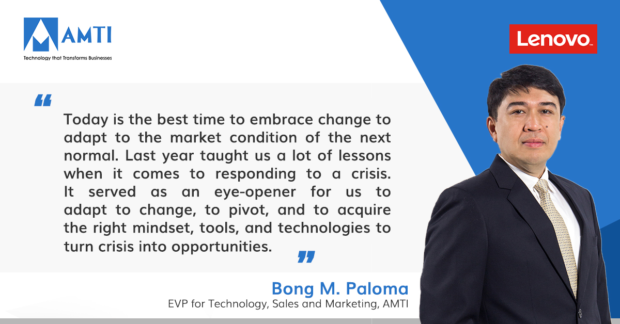
The world continues to experience the impact of the COVID-19 pandemic. In the business context, several organizations experience first-hand how to be resilient and innovative in times of crisis—where some failed, and others succeeded. It was even called the “large-scale experimental run on remote working” since the pandemic forced companies to shift and adapt overnight to continue business despite the imposed lockdowns.
But in over a year, it is evident that remote working will continue for a long time, even after this pandemic. Albeit, this radical shift was forced upon us, many businesses have experienced the flexibility and high productivity remote work has presented during this pandemic.
Today, the new reality businesses face is the transition and adoption of a hybrid workplace setup. A hybrid workplace will be the next normal, and we will never go back to a 100% office-based setup. Many companies have realized that a hybrid design has many advantages. It reduces the office footprint, thus, saving on rent and utilities. It allows customer-facing employees to recover productivity time lost due to a worsening traffic condition, and occasionally, during government-imposed lockdowns. “From what I see, Hybrid workplace is going to be part of the new or next normal. Companies will make the necessary investment in both hardware and software to allow for a hybrid workplace environment. As a result, a new culture will emerge, leading to new ways of doing business”, said Mr. Bong M. Paloma, EVP for technology, Sales and Marketing of AMTI, one of the most diversified ICT companies in the Philippines and a Digital Transformation enabler.
Mr. Paloma shared some of the relevant steps to take when setting up a Hybrid workplace to address some of the challenges most companies are facing during the pandemic.
Providing equal experience
Working at the office or outside the office should provide the same user experience in terms of access to office applications and productivity tools with the same level of security protection. Leaders and managers must create a work arrangement that is fair to all. HR must revisit the work objectives of every individual and craft them in such a way that it drives the proper employee behavior. Build more systematic and automated processes, effective communication and collaboration, and conduct employee training to foster and maintain human connections and work culture.
Regardless of where work is fulfilled, companies should provide clear guidelines and consistent work experience.
Improving and ensuring safe office spaces
The fear of contracting the COVID-19 virus will always be there until the pandemic crisis subsides and everyone got vaccinated. In this case, when returning or using office spaces, the top priority should be ensuring that the office space is safe and observes social distancing and regular sanitation. Maintaining office spaces for a hybrid work setting can also be beneficial in the long term, even after the pandemic.
Investing in the right solutions and technologies
The technologies that enabled remote working are the same technologies that can power a hybrid work setup—leveraging the cloud for secured and flexible access, collaboration tools such as videoconferencing, instant messaging, automated workflow systems, and end-to-end cybersecurity software. Moreover, devices like laptops can be best suited for this setup for employees who work in the office and at home. An employee should be productive at home as they would be in the office, or vice versa. The workforce will remain effective if they have the right solutions and tools in place-enabling a best-performing hybrid workplace.
As a result, most employees are becoming accustomed to remote working and expect to work in a culture that offers this kind of flexibility, even when the time comes that offices will reopen on a larger scale. “Today is the best time to embrace change to adapt to the market condition of the next normal. Last year taught us a lot of lessons when it comes to responding to a crisis. It served as an eye-opener for us to adapt to change, to pivot, and to acquire the right mindset, tools, and technologies to turn crisis into opportunities”, Mr. Paloma explained.
AMTI, together with Lenovo, provides businesses with suitable laptop models and peripherals that meet individual’s remote work needs to emerge and be successful today and in the next normal. The Lenovo ThinkPad® laptops are equipped with secured and intelligent features that let you perform your best whether you work in the office or at home.
—
Talk to AMTI now to help you analyze your current business situation and remote work readiness to come up with recommendations and solutions tailored for your business. Send your inquiries at https://amti.com.ph/contact-us/ or email us at inquiries@amti.com.ph
Follow AMTI on Facebook and LinkedIn for more technology updates.
ADVT.
Read more Business stories:
Digital transformation of PH gets a boost from PLDT Group
Home as we know it in a post COVID world

